Strand by Strand – Tutsi Basketry Weaving
PRIMITIVE - Friday, December 05, 2014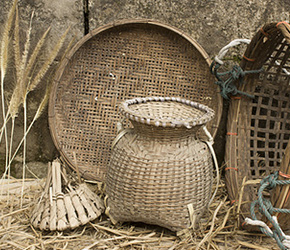 |
|
By Misaki Imagawa
Here’s a question: can you name a single ancient civilization that did not create and utilize baskets? The answer is probably no. Which means that baskets may well be one of the oldest art forms in human history. Unfortunately, the natural fibers used to create baskets made it difficult for many samples to be preserved over thousands of years. However, archeologists have discovered ancient pottery fragments that contain the imprints of basket weaves, presumably used to mold the pots. In the past, basketry was a utilitarian necessity in the lives of people. In much of the Western world today, it is seen more as craft and decoration, an additional element of finery to fill our homes. However, in some parts of the world basket weaving has intertwined functional and artistic elements making some individual pieces highly desirable collectibles.
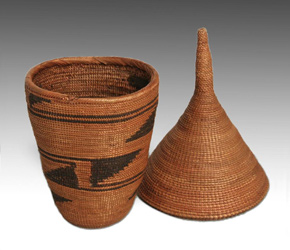 |
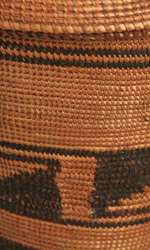 |
|
When it comes to basketry, the Tutsi people of Rwanda, Central Africa are considered some of the finest weavers in the world. Unfortunately, basketry is an often overlooked category in the field of African collectibles; too often overshadowed by wooden and metal artworks. Tutsi hand-woven baskets nevertheless demonstrate exceptional craftsmanship combined with practicality and exquisite decorative elements.
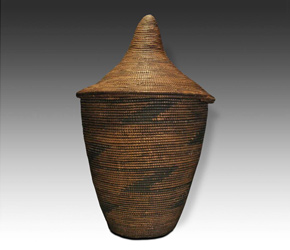 |
|
Weaving is a primary form of artistic expression among the Tutsi people. Traditionally, elite women of the tribe would spend recreational evenings sitting together, diligently weaving baskets that required hours upon hours of careful work to complete. It was a communal time for the women, who worked on baskets, bead work and embroidery while a Tutsi musician played melodies for them in the background. Though most baskets with their unique conical lids were functional and used in daily life, smaller mini baskets were often presented as wedding gifts as a place to store valuables. But baskets were not the only things woven by women. Tutsi households were decorated from floor to ceiling with hand woven artworks: carpets lined the floors, panels and tapestries lined the walls, and decorative screens brought vibrant geometric arrangements into the home.
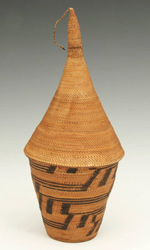 |
|
While it was the women who created baskets and tapestries, the men of the tribe were also weavers. They were in charge of building large, woven architectural structures such as granaries and dwellings. Beehives, fishnets and fences were also woven. The Tutsi utilized a variety of plant fibers including grass, bamboo, reed, raffia, banana leaves and papyrus trees to create weaving materials. It was necessary to prepare these fibers by soaking, beating and then drying over the course of several weeks. Then they derived natural black and red dyes from plants to weave in contrasting patterns against the naturally gold color of the fibers. The motifs of these patterns, while appearing to be random zigzags or triangles, all have names and represent valuable items such as cowry shells and the tips of arrows.
Despite its long and intricate history, very few Tutsi baskets of the early 20th century remain. Years of violence between the Tutsi and Hutu tribes during Rwanda’s colonial and post-colonial eras led to the destruction of many villages, homes, and the artworks that once decorated them. During those tumultuous years – which continued as late as the mid 1990s – the art of weaving was lost, alongside hundreds of thousands of Rwandan lives. Yet, since the end of the conflict both Tutsi and Hutu women have once again picked up the tradition of basketry, reviving the lost art in an effort to heal and reconcile. Today, basketry weaving in Rwanda honors its traditional history, refined craftsmanship, and the hope for a peaceful, brighter future. The creation of each piece mirrors the nimble movements of elite Tutsi women from the past who wove together an amazing artistic tradition and history - strand by strand.
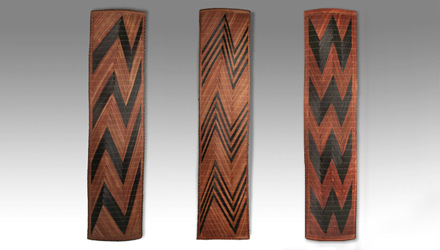 |
Download this Article: Strand by Strand.pdf